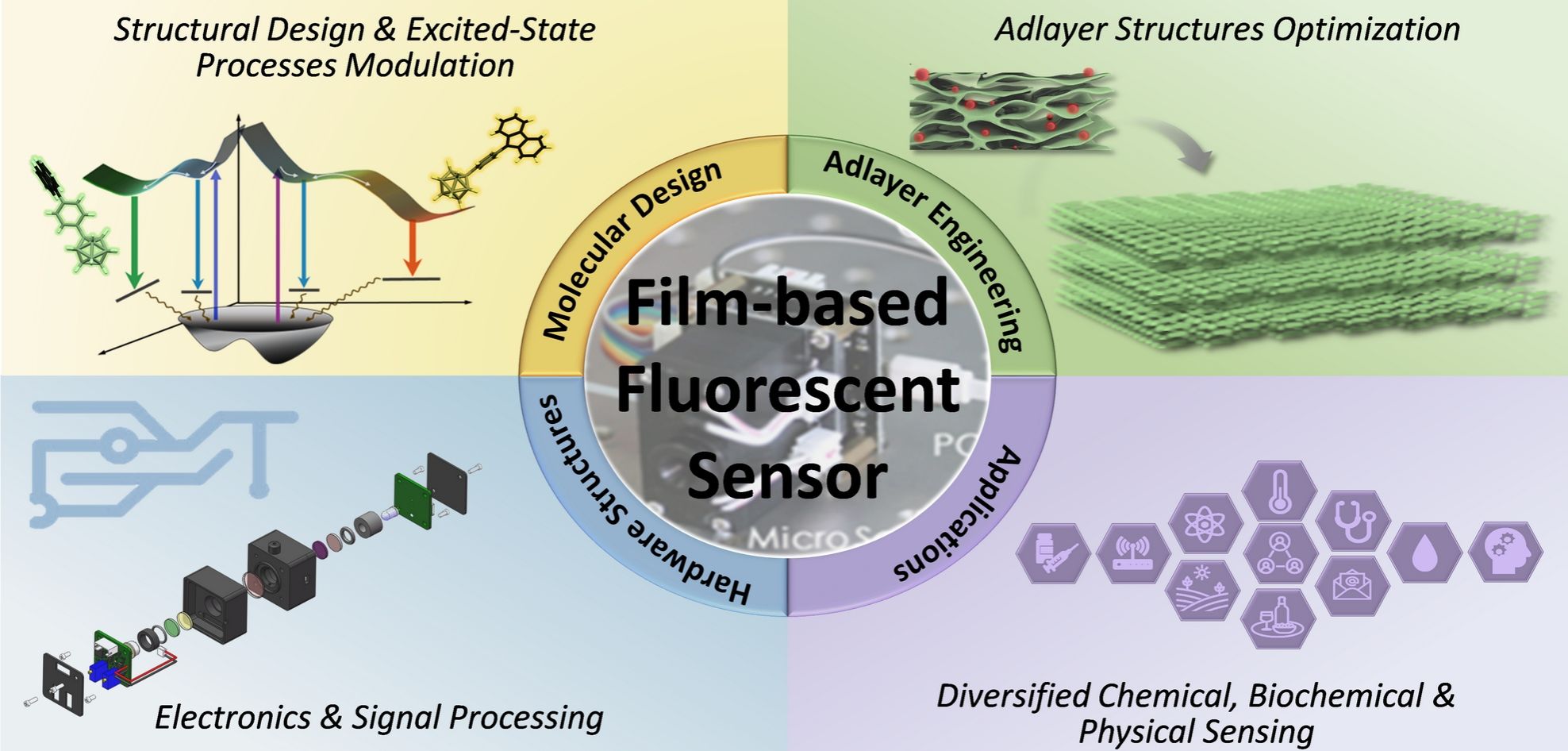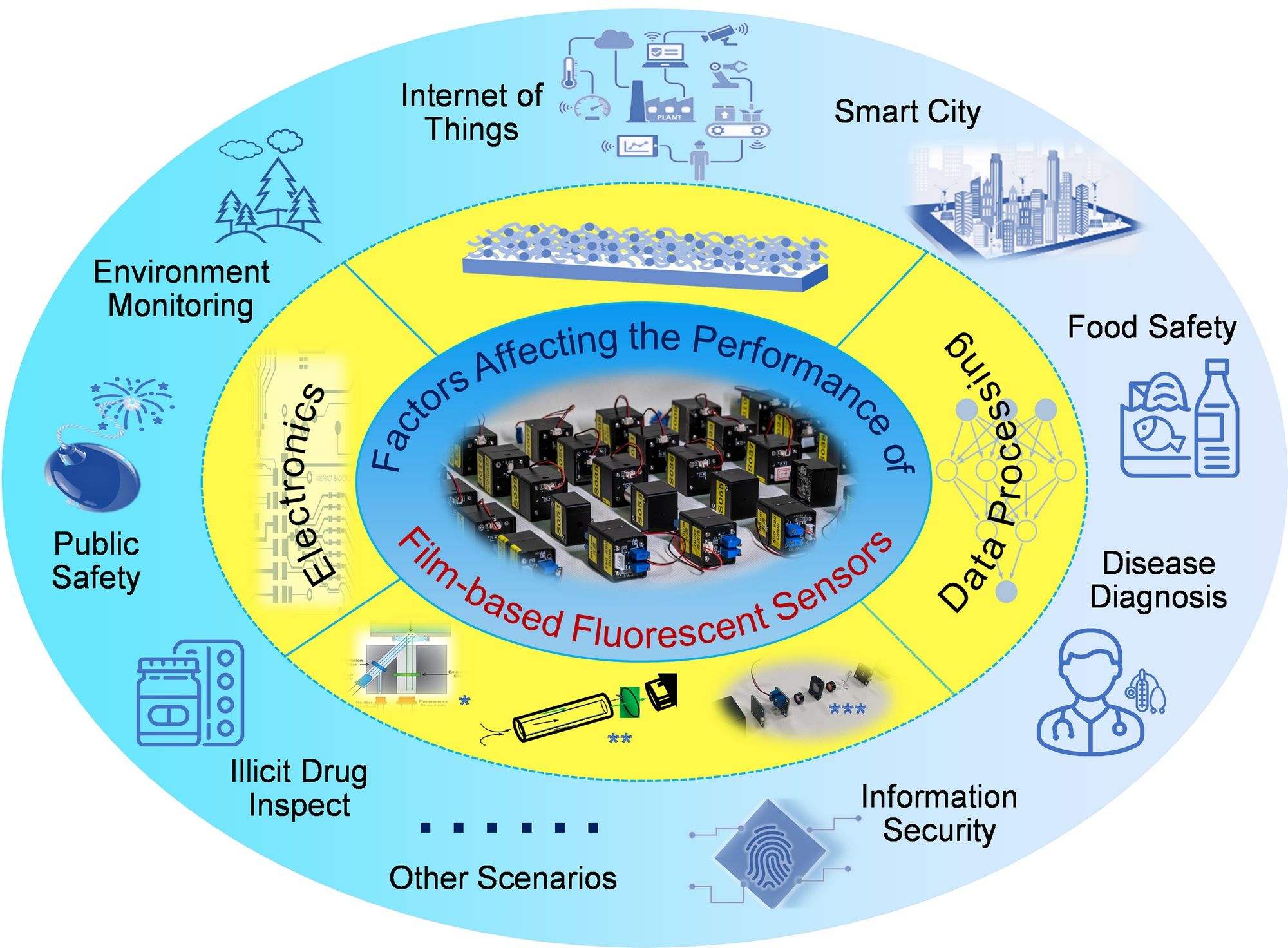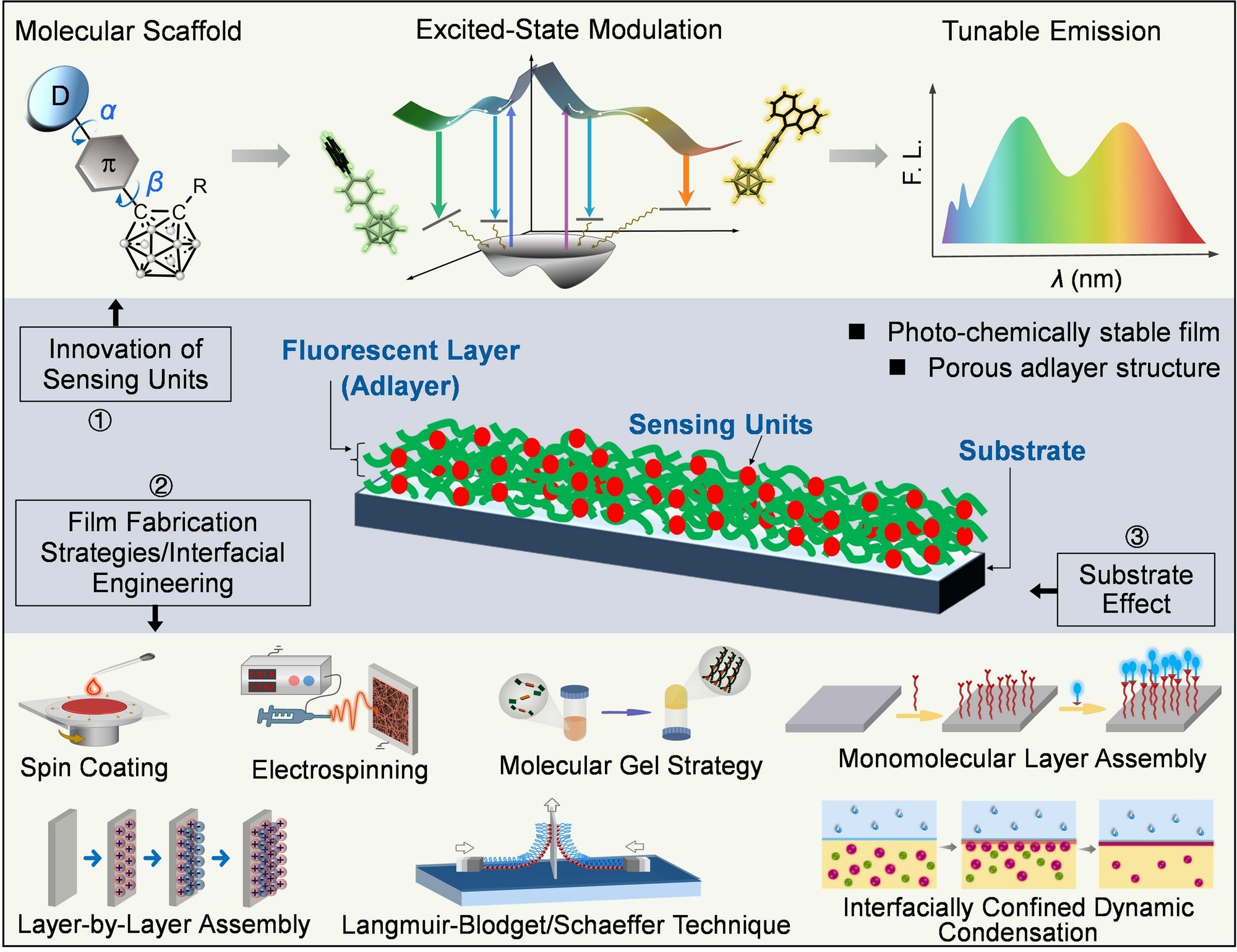

Rongrong Huang, Taihong Liu, Haonan Peng, Jing Liu, Xiaogang Liu*, Ding Liping* and Fang Yu*. Chem. Soc. Rev., 2024, DOI: 10.1039/d4cs00347k
Recently, the research group led by Prof. Fang Yu of the Institute of New Concept Sensors and Molecular Materials at Shaanxi Normal University published a comprehensive review article on the molecular design and materials construction of film-based fluorescent sensors in Chemical Society Reviews. Dr. Huang Rongrong is the first author, and the corresponding authors are Prof. Fang Yu, Prof. Ding Liping, and Prof. Liu Xiaogang from the Singapore University of Technology and Design.

Figure 1. Key factors (sensing film, hardware structure, electronics, data collection, processing, etc.) affecting the sensing performance of filmbased fluorescence sensors and their potential applications. Notes: * an optical system structure of a commercial instrument; ** the device structure invented by Swager et al.; *** the device structure invented byFang et al.
With the rise of the intelligent society, sensors have become the primary link between the physical world and virtual signals, pervading numerous facets of human production and daily life, including industrial and agricultural operations, national defence and security, medical and healthcare realms, and environmental monitoring. This pivotal role has led to the inclusion of sensors in the 14th Five-Year Plan and the 2035 Vision Outline. As a subset of optical sensing technology, fluorescent sensing technology occupies a crucial position in the detection and measurement of diverse chemical substances, biological species, and physical parameters. In comparison to homogeneous (solution-probe) sensors, film sensors offer distinct advantages, such as non-interference with the system being tested, reusability, and ease of implementation, making them highly sought after.

Figure 2. Schematic illustration for the innovative development of filmbased fluorescent sensors from molecular design, fabrication strategy, and substrate effect, where the two pre-requirements for high-performance sensing are presented.
Film-based fluorescent sensors (FFSs) have been identified by IUPAC as one of the top ten emerging technologies in chemistry for 2022. FFSs are internationally recognized as a cutting-edge micro-trace substance detection technology, offering exceptional detection performance, versatile design options, excellent integration capabilities, low power requirements, and the ability to be miniaturized easily. Over the past two decades, high-performance FFSs have made significant strides in detecting explosives, drugs, chemical warfare agents, volatile organic compounds, temperature, ultraviolet light, humidity, and more. Several FFSs have successfully transitioned from lab experiments to practical applications, showcasing their significant value in driving economic and social development.
The rising number of publications underscores the growing influence of FFSs in the realm of sensing technology. Extensive efforts have been directed towards the development of sensitive materials and advanced sensing devices, leading to significant breakthroughs that propel the advancement of FFSs. Nevertheless, only a handful of sensors, primarily comprising drug and explosive detectors leveraging organic luminescent materials, along with oxygen and temperature sensors using rare earth luminescent materials, have managed to penetrate the market and find practical utility. Consequently, expediting the transformation of sensor research into real-world applications remains a formidable challenge.
When it comes to practical usage, the sensing sensitivity, selectivity, response speed, and reusability are pivotal factors in determining the feasibility of a film-based fluorescent sensor for practical deployment. To achieve high-performance fluorescent sensing, critical focus must be placed on the preparation and enhancement of sensitive film materials, which hinge on the rational design of fluorescent units and the precise construction of film materials.

Figure 3. Different techniques or strategies to develop fluorescent sensing films, and comparison of different film fabrication strategies from the aspects of operation simplicity, cost efficiency, film uniformity, film thickness controllability, and porosity.
Herein, Prof. Fang Yu, Prof. Ding Liping, in collaboration with Prof. Liu Xiaogang from the Singapore University of Technology and Design, have jointly authored a comprehensive review article, systematically reviewing the research progress in the field of FFSs over the past twenty years. The review focuses on introducing representative achievements in the design of fluorescent molecules and active layer structures engineering. This review elaborates on several commonly used organic fluorescent small molecules and the excited state processes relevant to sensing processes. Additionally, it delves into six different film material preparation techniques and strategies, analysing their respective advantages and disadvantages. Furthermore, the review discusses the impact of film photostability and substrate effects on the sensing performance of FFSs. Finally, the authors provide further insights into the opportunities and challenges in this emerging field.
First Author: Huang Rongrong, postdoctoral researcher, Singapore University of Technology and Design
Correspondence Authors: Prof. Xiaogang Liu, Singapore University of Technology and Design, Prof. Ding Liping and Ding Liping, Shaanxi Normal University
Full Text Link: https://pubs.rsc.org/en/content/articlelanding/2024/cs/d4cs00347k